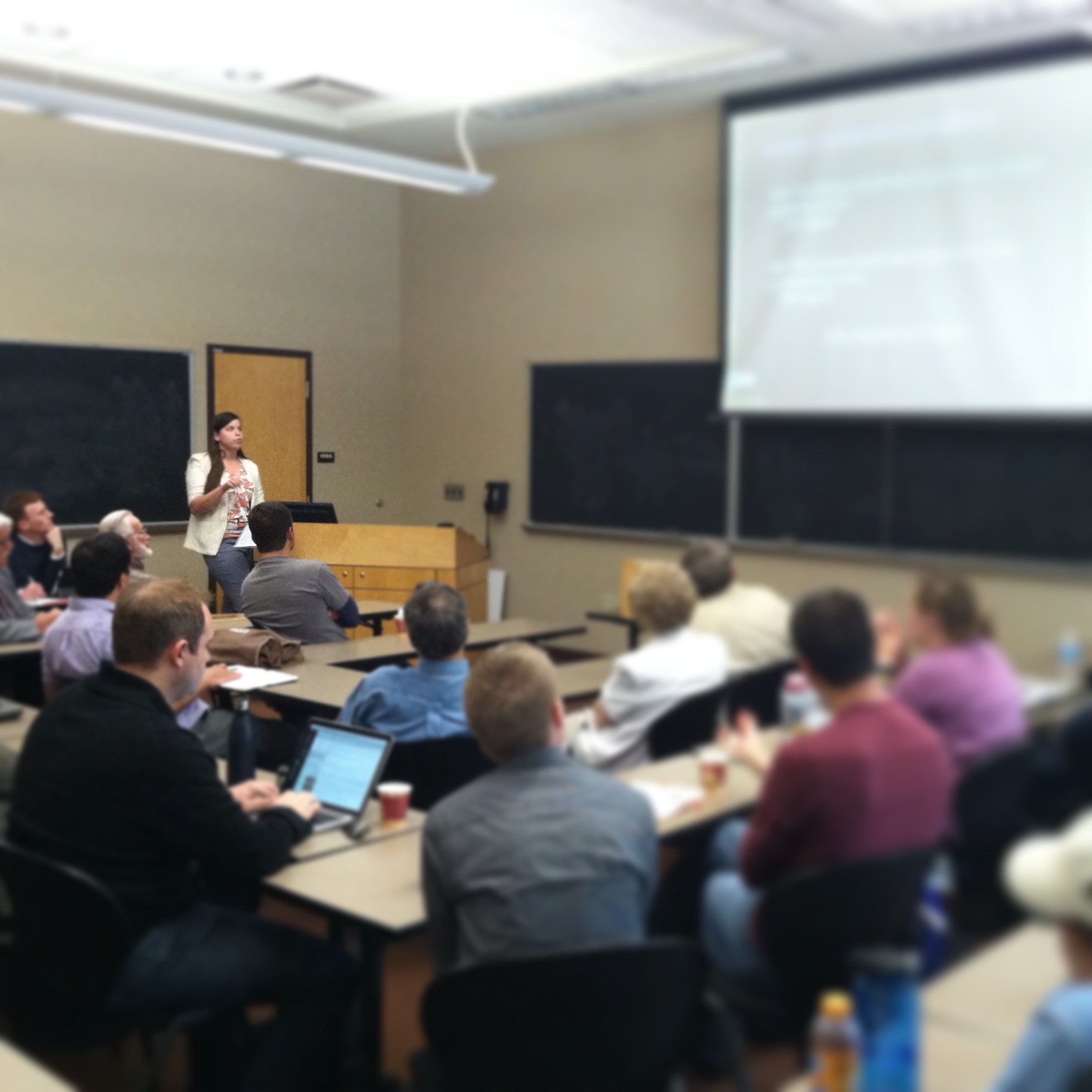
Update: John Fea has Storified Brooke’s presentation. Storify is a digital app that makes Twitter feeds much easier to read and follow. Check it out!
This afternoon I had the privilege of hearing Messiah College senior Brooke Strayer’s presentation on the trajectory of the Brethren in Christ peace position throughout the 20th and early 21st centuries.
It was a packed house in Boyer 130 to hear Brooke — who is double-majoring in History and Peace and Conflict Studies — use historical and sociological analysis to argue that the Brethren in Christ have moved from a strong unity to a lack of unity on the issue of peace.
Brooke’s project examined the path of the Brethren in Christ peace position across its last 100+ years, and tied that historical narrative to contemporary survey data from Brethren in Christ senior pastors in the U.S. She did an excellent job of developing a clear historical narrative — that over the course of the 20th century the Brethren in Christ moved from unity on peace to a lack of unity on peace — and substantiated her claims with solid research in primary source historical materials (including General Conference Minutes and articles from the Evangelical Visitor).
Brooke shared some interesting quotations from the Evangelical Visitor by Brethren in Christ peace leaders like E. J. Swalm and Fred Elliot. She also connected this qualitative data to statistical data about the Brethren in Christ, such as the churchwide surveys conducted by J. Howard Kauffman in the 1970s and 1980s.
Interestingly, she noted that affirmation of peacemaking among the Brethren in Christ dropped 22% between 1972 and 1989. When asked about this during the Q&A, Brooke suggested that the higher numbers in 1972 might reflect the influence of the broader public anti-Vietnam War sentiment, while the 1989 stats might reflect the influence and popularity of Ronald Reagan and the Christian Right. She also pointed out that the influence of Evangelicalism might have something to do with the drop in adherence to the peace position.

Brooke also noted the different language the Brethren in Christ have used throughout their history to explain their peace position: from passive-sounding language like “nonresistance” to more active language like “peacemaking.” They’ve also used terms like “nonviolence” and “pacifism.” She suggested that this semantic confusion parallels the church’s own inability to define its peace position. What does it mean, she asked, for the Brethren in Christ to promote “active peacemaking,” as they claim to do in their most recent doctrinal statement? How do they define that language?
Brooke then tied this historical narrative to a contemporary one, by presenting the results of a 2014 survey of Brethren in Christ senior pastors. She asked these pastors questions about their own views on peace, their understanding of Jesus Christ as a peacemaker, and the perceived views on peace in their churches. Brooke’s interpretation is that the denomination today is pretty evenly split on their beliefs and practice of peace.
Brooke concluded her presentation with some suggests for how the church could do a better job of teaching and preaching peace, including re-instituting Peace Education Sunday (apparently a denomination-wide effort in the 1960s and 1970s that I’d never heard of) and creating space for people on both sides of the “peace issue” to discuss their perspectives with the goal of better understanding and learning from one another.
John Fea, a history prof at Messiah, tweeted much of Brooke’s presentation under the hashtag #strayerpeace. For a blow-by-blow recounting of the presentation, you can check out the Twitter stream here. Or check out the Storify-ed version here.
I was very impressed by Brooke’s research and analysis. As a younger person who cares about the Brethren in Christ peace position, it was nice to see another “millennial” with a similar passion.
The presentation was conducted under the auspices of the institute I run at Messiah College: the Sider Institute for Anabaptist, Pietist and Wesleyan Studies. Technically, Brooke was a Wittlinger Scholar, which means that she applied for and received a modest grant to launch and complete her work. As part of her award, she needed to give a public presentation of her research.

Sounds like a wonderful presentation. So sorry I was unable to be there.
I’m sorry I missed it too. By the way, the Grantham Church’s annual “Peace Sunday” is perhaps one of the only remnants of the denomination’s annual observance in previous years. As late as the early 1990s, the former Board for Brotherhood Concerns created and distributed resources for Peace Sunday (I was a staff person for the board at the time).